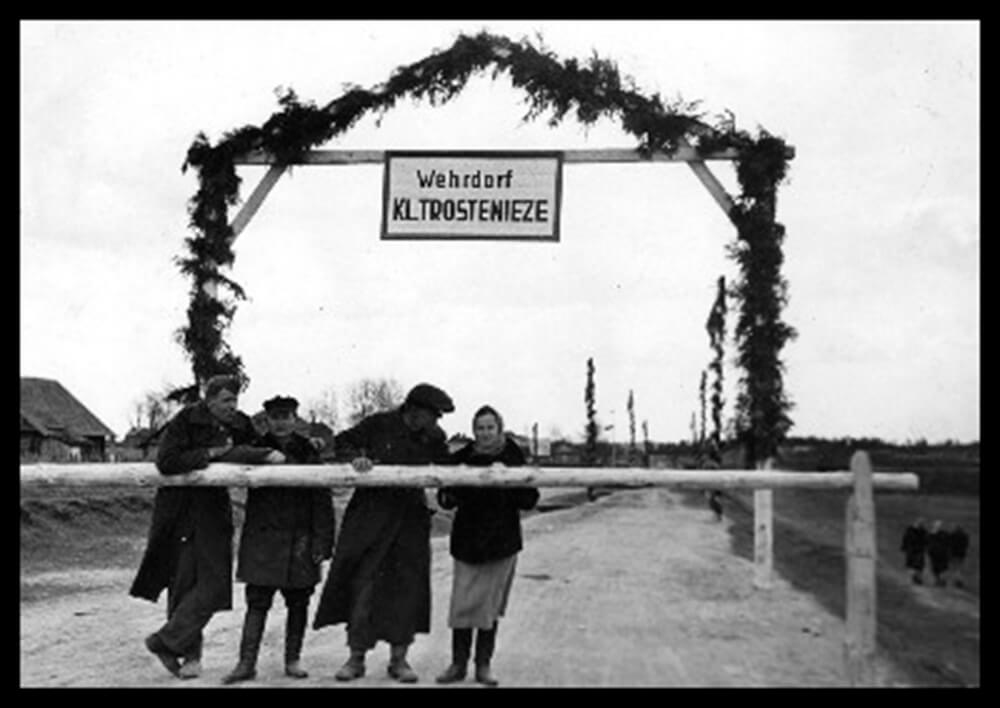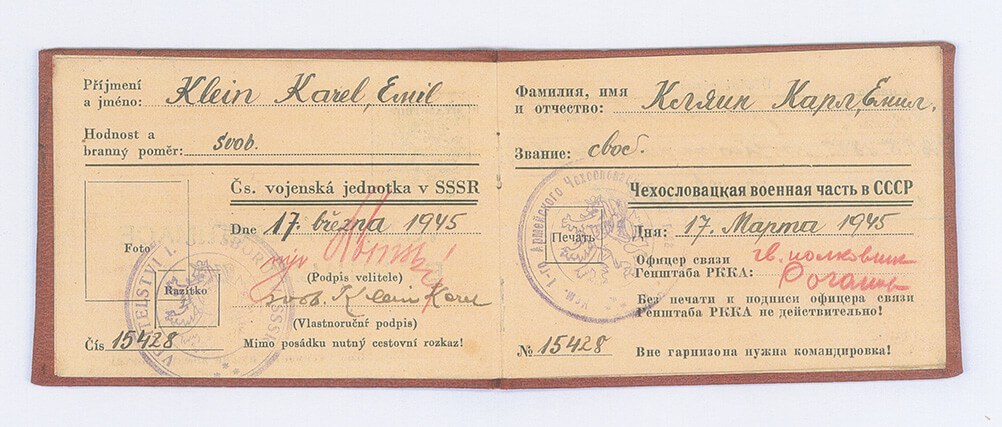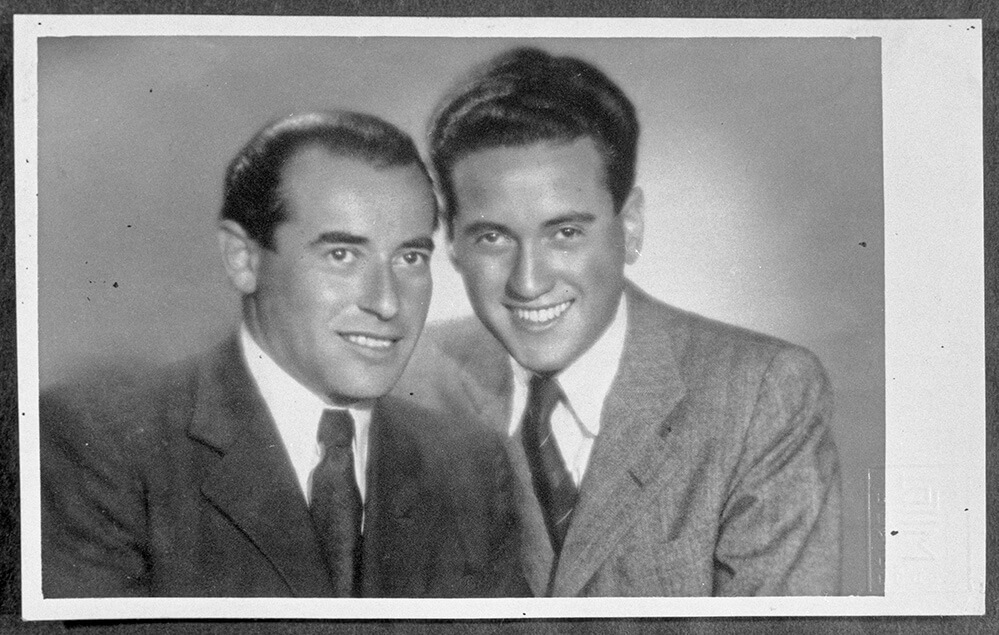Maly Trostenets

Entrance gate to the village of Maly Trostenets.
Belorusskij gosudarstvennyj muzej istorii Velikoj otečestvennoj vojny, MinskA little-known chapter in the history of the Shoah against the Jews of Bohemia and Moravia took place in the territory of occupied Byelorussia. The Maly Trostenets concentration and extermination camp was set up on the site of a former kolkhoz (collective farm) at the beginning of 1942 in a village about 12kilometres to the south east of Minsk. Designated as an SS farm, the camp supplied provisions for German units in Minsk. The camp was originally intended for prisoners of war, but inhabitants from the surrounding area and Jews from Minsk were gradually sent there. Blagovshchina Forest near the camp was used as a mass killing site. In the spring of 1942, Maly Trostenets became the terminal station for many trains carrying Jews from the occupied territories of Eastern and Western Europe. After a branch line was built in the summer of 1942, the convoys of deportees could be unloaded near the killing site – to be either shot or murdered in mobile gas chambers (“dushegubky”). Pits measuring 50 metres long and 3 metres deep were filled with the corpses. From the end of 1943, prisoners were forced to exhume the remains of bodies from 34 mass graves and to burn them. Other executions were carried out in Shashkovka Forest, where the victims were immediately burned. The pyres were still burning when the Soviet troops arrived on 3 June 1944. Only a few prisoners survived, all in a wretched state. Estimates of the number of people killed there range from 60,000 to 205,000.
Five trains were dispatched from the Terezin ghetto to Maly Trostenets, bringing 4,993 prisoners to their deaths. Only nine of these deportees survived by escaping and joining the partisans.

